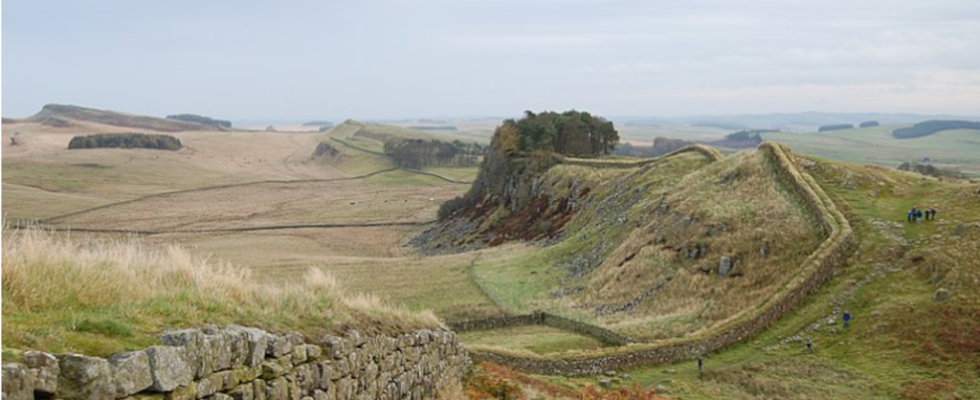It is a wall that crosses the United Kingdom from west to east on the border between England and Scotland. Hadrian’s Wall, built by the Roman army nearly 2,000 years ago. Today it is a paradise for archaeologists. A dozen tourist sites are devoted to it. But climate change could threaten this treasure.
Hadrian’s Wall, a former military fortification 120 km long, is today buried under fields in the Anglo-Scottish bogs, superbly preserved thanks to a subtle balance of water and oxygen in the soil.
Andrew Birley, the chief archaeologist of the Magna site, has eyes that shine when faced with the remains: ” Hadrian’s Wall covers a very large area. The people who lived there were an incredibly diverse group, who came from all over the Empire, who occupied it for centuries. All borders are rich in lessons about humanity at such and such a period in history. All of this can help us better understand other border areas, other communities. It should be seen as a treasure chest, nurtured by hundreds of thousands of people for hundreds of years. »
“When you lose the wood, you lose everything”
But in recent years, the bog has been drying up: a consequence of climate change. “ Here, the ground level has dropped. On the neighboring site, in Vindolanda, we see entire Roman forts, built of wood, which are disappearing… The beams have deteriorated so quickly that they leave air tunnels which bring in oxygen, minerals, bacteria within the buried remains. And when you lose the wood, you lose everything that is documents, writing tablets, etc. It’s really scary.” regrets the archaeologist who can only see the damage.
And to add: “And I can say ‘you see, I haven’t found any textiles for 5 or 6 years. Over the previous 10 years, I found 40 to 60 a year!’ They say “Oh, you’re out of luck”. But I’m afraid it’s not a matter of luck. »
So, to prove this intuition that global warming threatens the remains, for a year and a half, in the middle of the fields, a strange machine has joined the site: a small robot one meter high by two meters wide whom everyone here affectionately nicknames Wall-E, in homage to the Disney character.
” We wanted to have a precise image of what is happening here: the rainfall, the wind with the sensor on the right. There are also underground probes or a humidity sensor. This one measures PH. Ideally, bogs are quite acidic. We also measure the oxygen, which must be low so as not to threaten the remains. In all, 50,000 measurements are taken per year. Every 15 minutes, the robot sends data to our base,” explains Dr. Gillian Taylor, professor of analytical chemistry, who oversees the machine.
” We will never be able to save everything, it is impossible”
From time to time, his connected watch gets carried away. A sheep planted in front of the photovoltaic panels distorts the measurements. Wall-E must work for ten years, financed by the archaeological trust: “ We need to collect this data to know what strategies to put in place to minimize the damage. Without data, we cannot plan. If we manage to know exactly what is happening on this site, perhaps we can transpose it to other sites: what should be measured, from a chemical point of view, from a climatic point of view ? And also, how to show those who don’t believe in it that climate change has an impact ? »
With the data collected, the archaeologist and the chemist hope to influence legislative and archaeological decision-making. But Andrew Birley is under no illusions. ” We can never save everything, it’s impossible. It’s too vast! There are too many things! So we have to develop strategies, we have to ask ourselves “what do we really want to discover? and go get that. The archaeological vestiges, once they are destroyed, it is finished, with all this collective account of our History. It’s like a box of photos in an attic: if there’s a leak in the roof and the box gets wet, all those memories are destroyed. What do we want out of the attic? he wonders.
A few meters from Wall-E, new excavations have just begun to uncover a defensive fort. 2,000 years after the departure of the Romans from the island of Britain, the wall of Emperor Hadrian continues to reveal its secrets.
Read alsoThe other episodes of our series on the walls of the world
